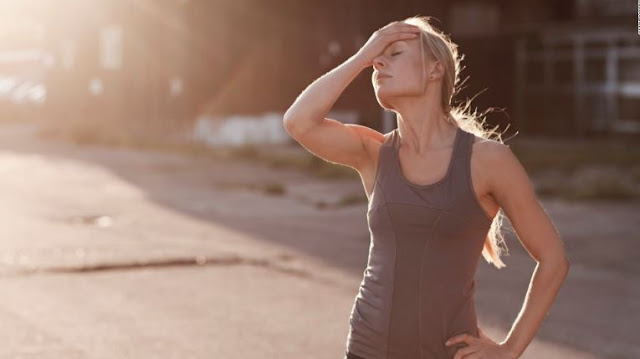EduCaster, IOWA—Iowa Wesleyan University President Steven Titus says he doesn't know what the school will resemble a long time from now.
Established in 1842, four years previously Iowa turned into a state, Iowa Wesleyan could converge by 2024 with one of the in excess of 200 other school and colleges associated with the United Methodist Church. Or on the other hand it may be purchased out by a bigger system of schools. Or then again by an online college – giving a notable Iowa-based physical grounds for an administration that recently existed just in the virtual world. Or then again it may fashion new program-imparting connections to a portion of Iowa's open junior colleges or with different business bunches in southeast Iowa.
Yet, Titus is sure that the 2019 green bean class will most likely alumni with a degree from the school – something that as of late appeared to be improbable. In November, Iowa Wesleyan's Board of Trustees was thinking about covering the establishment this spring except if it could raise in any event $2.1 million.
"As of now, the college does not have the required budgetary underpinnings to cross over any barrier between solid enlistment and new programming, and the cash expected to keep the foundation open," Titus wrote in an announcement Nov. 1.
Without a sound blessing and with a constrained contributor organize, such a fast implantation of money appeared to be a removed probability a high bar for the little college. Be that as it may, graduated class and the nearby monetary network rose to the test: A teacher gave $500,000, and $120,000 originated from the Mount Pleasant Area Chamber of Commerce. The school would stay open, yet the leading body of trustees declared it would need to develop.
"It's anything but difficult to remain inside customary reasoning," Titus says. "In any case, these are whimsical occasions at the present time, and I need to remain open to the procedure."
As indicated by Education Dive, an exchange production that centers around the instruction business, 174 universities have encountered shutting, mergers, procurement or other union since 2016. Iowa Wesleyan's board and chairmen have been working with experts at the Massachusetts-based Registry Advisory Services. The main part of the Registry's business centers around giving between time administration to schools and colleges. Be that as it may, in the course of recent years, a developing segment of the organization's administrations has included affiliations, associations, mergers and acquisitions.
"What's happening right now amid these seasons of extraordinary weight has some positive angles," says Bryan Carlson, leader of the Registry. "We are taking basically vital assets and finding better approaches to propagate those assets, still for advanced education, however developing them into substantially more practical and contemporary and applicable assets to address the issues of the 21st century."
Iowa Wesleyan has been encountering what Titus calls a "forceful change motivation" since he landed on grounds in 2013. Investigating "elective prospects" for the school is the most recent phase of that procedure.
"We realized the work was extremely 10 years of turning the college around, turning maintenance around, developing projects and getting the cost side of the activity under solid control," Titus says.
Undergrad enlistment has fallen at Iowa Wesleyan, from a high of 858 out of 2009 to beneath 500 of every 2015, as per information gathered by Iowa College Aid. Current enlistment is somewhat more than 600 understudies; the objective is to develop enlistment to around 1,000 understudies on grounds, Titus says.
There has been an expansion in the quantity of global understudies on grounds, says Meg Richtman, the college's VP for key activities. Furthermore, enlistment measurements demonstrate that, over the previous decade, the cosmetics of Iowa Wesley's understudy body has moved, with non-occupant understudies presently dwarfing in-state understudies 2:1.
Gary Steinke, leader of the Iowa Association of Independent Colleges and Universities,
says he wasn't shocked in November by Iowa Wesleyan's declaration of its problematic budgetary circumstance. The college's lower-than-normal enlistment has been exacerbated by the district's decadelong loss of assembling employments and the absence of bigger organizations in southeast Iowa.
Titus concurs that, in spite of the liberality of the nearby business network, the absence of huge worldwide enterprises in the locale leaves Iowa Wesleyan without supporters with sufficiently profound pockets to shore up the school on a more drawn out term premise.
Iowa Wesleyan's yearly financial effect on area encompassing the 8,500-populace Mount Pleasant is evaluated at more than $55 million, and its 60-section of land grounds incorporates probably the most seasoned instructive structures west of the Mississippi River.
"Southeast Iowa is a magnificent place to live and raise a family, however it likewise is one of the more monetarily impeded districts in the state," Titus says.
Steinke, whose affiliation incorporates 24 of Iowa's 29 private charitable schools and colleges, portrays Iowa's autonomous schools as being "all things considered exceptionally solid" with a steady in general enlistment. The greater part of the state's other private organizations have enlistments of more than 1,000, and he says he doesn't see cautioning indications of sudden closings from any of his affiliation's other part schools.
In any case, information gathered by Iowa College Aid show more than about 53 percent of the all out understudies selected in Iowa's private universities originate from outside the state. What's more, the long haul steadiness of a large portion of those schools, including Iowa Wesleyan, relies upon proceeding to draw in non-occupant and global understudies.
Titus says Iowa Wesleyan's development system relies upon increasingly forceful enlistment of understudies all through Iowa, Illinois and Missouri – alongside growing the school's online contributions. The subsequent stage, he says, likewise will require another accomplice will's identity ready to bring some money to guarantee that the 177-year-outdated has the refreshed lodging and redesigned notable offices to serve those understudies.
Titus stays certain that Iowa Wesleyan will proceed. He says he never dismisses how the effect of Iowa Wesleyan's future goes a long ways past simply the understudies, workforce and staff on grounds.
"This discussion is a lot greater than Iowa Wesleyan and about significantly more than simply our college," Titus says. "On account of our job as a provincial college, it's likewise about safeguarding a neighborhood economy and about territorial supportability."










